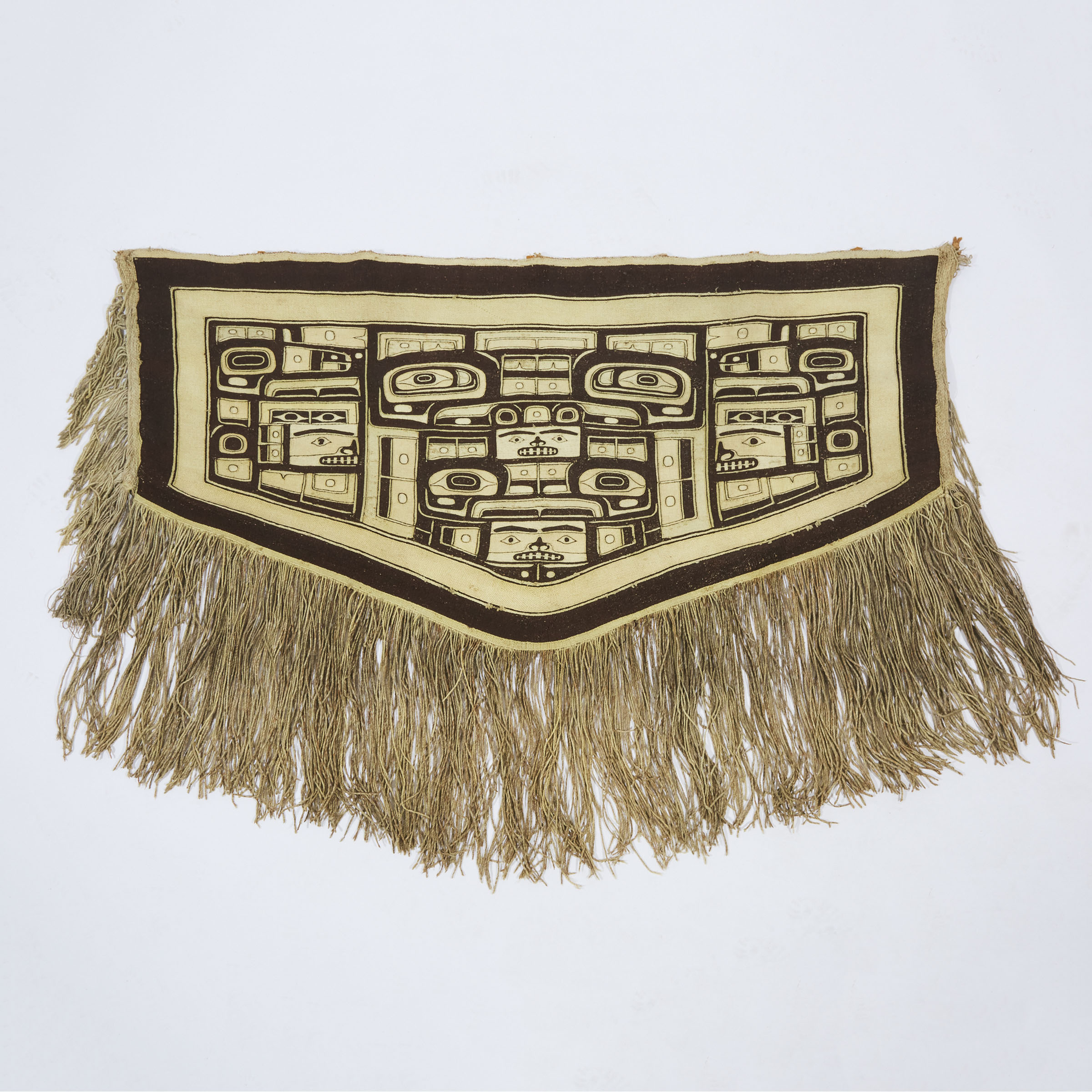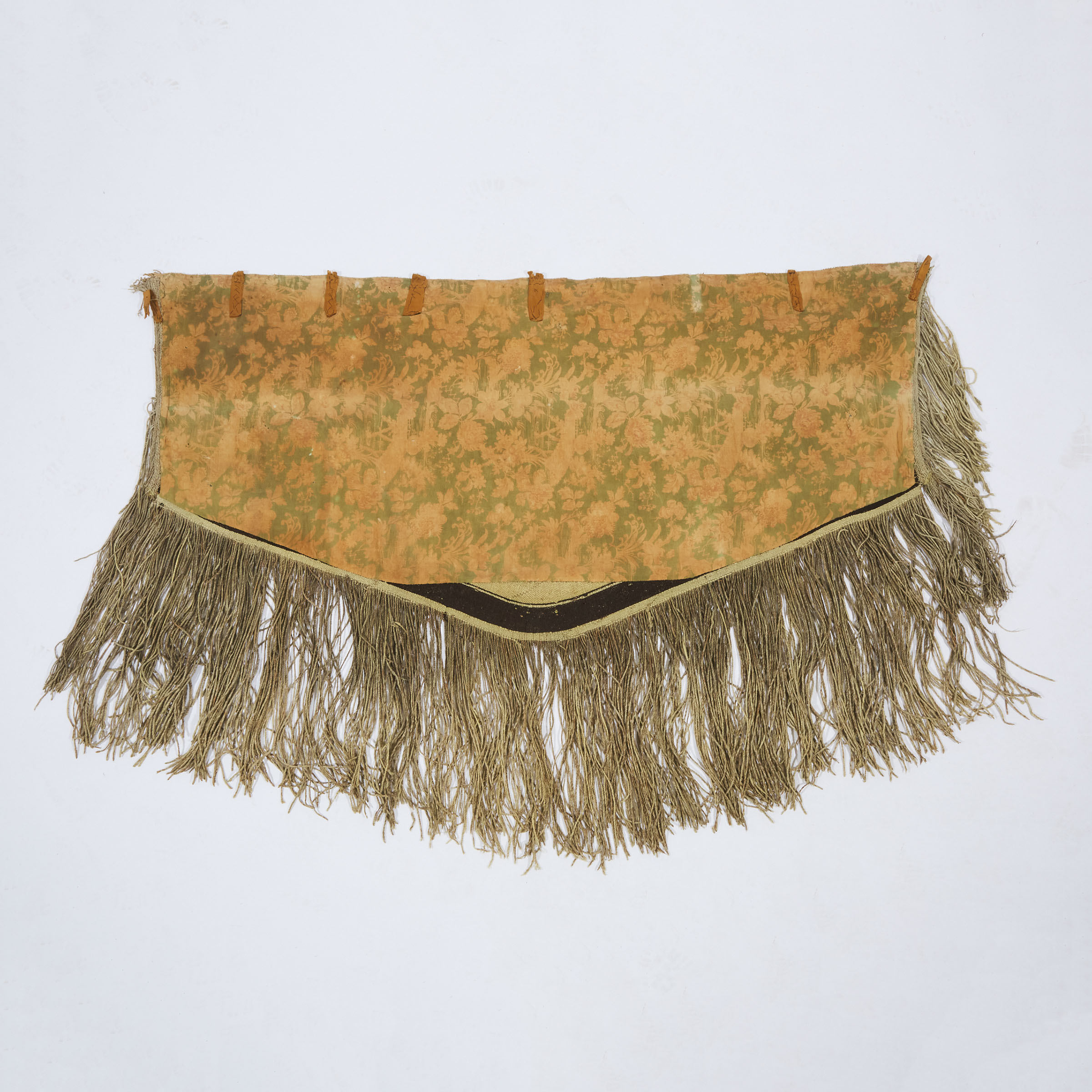Lot 201
Unidentified Artist, Tlingit

Additional Images

Provenance:
Private Collection, Ontario
Note:
Masterworks of technical and aesthetic achievement, the woven robes of the Northern Northwest Coast commonly known as Chilkat blankets (Naaxein in Tlingit), are products of one of the most complex weaving traditions developed by peoples anywhere. Used by the Tlingit and geographically adjacent groups, there is good evidence that Naaxein may have also been made by other peoples, but by the later 19th century, they had become most commonly associated with the Tlingit. [1]
The process for creating the blankets includes a technique known as “braided twining” in which lengths of mountain goat wool are braided together in the fashion of women’s hair and then secured to the warp or weft of a composition. This technique allows the weaver to depict the elegant curvilinear and circular shapes impossible to achieve in many weaving traditions, but necessary in the construction of Northwest Coast designs. Strengthened by the inclusion of cedar bark and coloured with a host of dyes whose ingredients might range from indigenous lichen, to imported iron in the later 19th century, the finished garments were worn in ceremony, danced, or draped in an exhibition of wealth and prestige. [2] Examples were made to be used by both genders and even by children, employed in the display of heritable crests and emblems which make up Northwest Coast iconography.
In making Naaxein, designs were first painted on wooden pattern boards which were closely referenced to create the robes themselves. The designs were traditionally painted by men, but the nuances of the weaving and dying craft was the strict purview of women. [3] Pattern boards might be reused by a weaver, and it is not unknown to discover two weavings made from the same board distinguishable only by subtleties of implementation of the expressive but highly formalised designs. Interpretation of the abstract designs sometimes proved a challenge even for members of communities from which Naaxein came. However, the format in which the majority of designs were structured on the robes is the same, with two panels flanking a central crest animal defined in thick black lines which have come to be known as formlines in the study of Northwest Coast imagery. [4]
The present example dating circa 1880 is composed of a bold and attractively laid out design rendered in crisp detail despite its age, maintaining much of its original uniformity and striking appearance.
(1) Bill Holm and Peter L. Corey, The Box of Daylight: Northwest Coast Indian Art (Seattle, WA: Seattle Art Museum, 1983), 57.
(2 ) George Thorton Emmons and Frederica de Laguna, The Tlingit Indians (Seattle, WA.: American Museum of Natural History and Univ. of Washington Press, 1991), 225-226.
(3) George Thorton Emmons and Frederica de Laguna, The Tlingit Indians, 224.
(4) Cheryl Samuel, The Chilkat Dancing Blanket (Seattle, WA.: Pacific Search Press, 1982), 39, 86-87.


